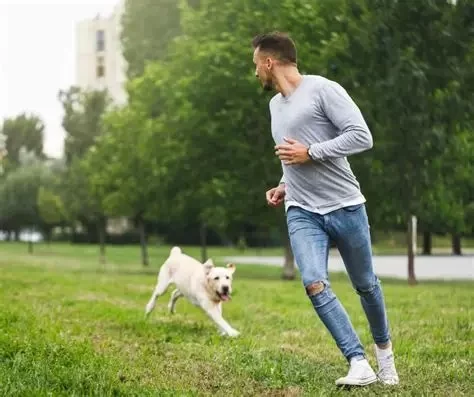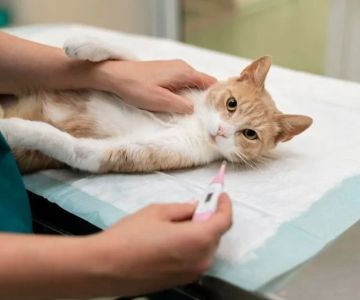Dog Off-Leash Training: How to Build Reliable Recall
- What is Off-Leash Training?
- Why Reliable Recall is Essential for Your Dog’s Safety
- Steps to Build Reliable Recall
- Common Challenges in Recall Training
- When to Seek Professional Help with Dog Recall
What is Off-Leash Training?
Off-leash training is a crucial aspect of dog training that allows your dog to listen to your commands and obey them even when not tethered by a leash. This type of training focuses on building your dog’s confidence, discipline, and responsiveness without physical restrictions, which can be particularly beneficial in outdoor settings like parks or trails.
However, achieving reliable off-leash recall — the ability for your dog to come to you when called, regardless of distractions — requires patience, consistency, and practice. Let’s explore how to build and maintain this essential skill.
Why Reliable Recall is Essential for Your Dog’s Safety
Reliable recall is not just about impressing your friends at the dog park; it’s a vital safety measure. In an emergency, you need your dog to come back immediately when called to avoid potential dangers like traffic, wild animals, or other hazards. Without reliable recall, you risk your dog running off or ignoring your calls in critical moments.
Beyond safety, reliable recall strengthens the bond between you and your dog. It fosters trust and communication, ensuring your dog feels secure and understands your expectations.
Steps to Build Reliable Recall
Now that we understand why recall is essential, let’s dive into the steps for training your dog for reliable off-leash recall:
1. Start with the Basics: On-Leash Recall
Before you even think about going off-leash, ensure that your dog has mastered recall on a leash. Practice calling your dog and rewarding them when they come to you. This will establish a strong foundation of the behavior you want to see in off-leash situations.
2. Use Positive Reinforcement
When training for off-leash recall, positive reinforcement is key. Always reward your dog with treats, praise, or play whenever they respond to your call. This helps them associate the recall command with something positive, making them more likely to return when called in the future.
Consistency is essential. Use the same command (e.g., "Come" or "Here") every time, and reward your dog consistently for responding correctly. This builds a strong association between the command and the action.
3. Gradually Increase Distractions
Once your dog reliably recalls on-leash, it’s time to increase distractions. Start by training in an enclosed yard or quiet space where there are fewer external triggers. Gradually introduce distractions like toys, other dogs, or even people. This helps your dog learn to focus on you, no matter what’s going on around them.
4. Practice in a Safe, Controlled Environment
Before going fully off-leash, practice recall in a safe, enclosed area. This allows your dog to practice coming to you without the risk of running off. As they improve, you can slowly increase the distance between you and your dog while reinforcing the recall behavior.
5. Transition to Off-Leash Recall
Only once your dog has demonstrated reliable recall on a leash and in controlled environments should you start practicing off-leash recall. Begin in a secure area, like a fenced dog park, where your dog can roam freely but can’t escape. Call your dog back to you at varying intervals, rewarding them for a successful recall.
Remember, building off-leash recall takes time. Don't rush the process, and be patient with your dog. Every dog learns at their own pace, and consistent practice is key to success.
Common Challenges in Recall Training
Recall training can be difficult, and many dog owners face challenges along the way. Here are some common obstacles you might encounter:
1. Distractions
Distractions are one of the biggest challenges when training for reliable recall. Whether it’s other dogs, smells, or wildlife, these distractions can make it hard for your dog to focus. The key is to start small with controlled environments and gradually introduce more distractions over time.
2. Inconsistent Rewards
If you don’t reward your dog consistently for coming when called, they may not understand the connection between the behavior and the reward. Make sure to reward your dog every time they respond correctly, especially during the initial training phase.
3. Lack of Motivation
Sometimes, dogs may not be motivated enough to recall. This can be due to a lack of high-value rewards or not finding the exercise fun. Make sure the rewards you offer are exciting and meaningful to your dog. Experiment with different types of treats or toys to see what they respond to best.
When to Seek Professional Help with Dog Recall
If you're struggling with off-leash recall, it might be time to seek professional help. A professional dog trainer can provide guidance on how to overcome specific issues like distraction or disobedience. They can also help refine your techniques and ensure that your dog’s recall training is progressing as it should.
For those in need of further resources, consider reaching out to Hidden Brook Veterinary for personalized advice and training recommendations. With expert guidance, you can get your dog on the right path to reliable off-leash recall.
Training your dog for reliable off-leash recall is a valuable skill that can improve your dog’s obedience and safety. With patience, consistency, and the right techniques, you can build a strong recall and enjoy greater freedom with your furry companion.











